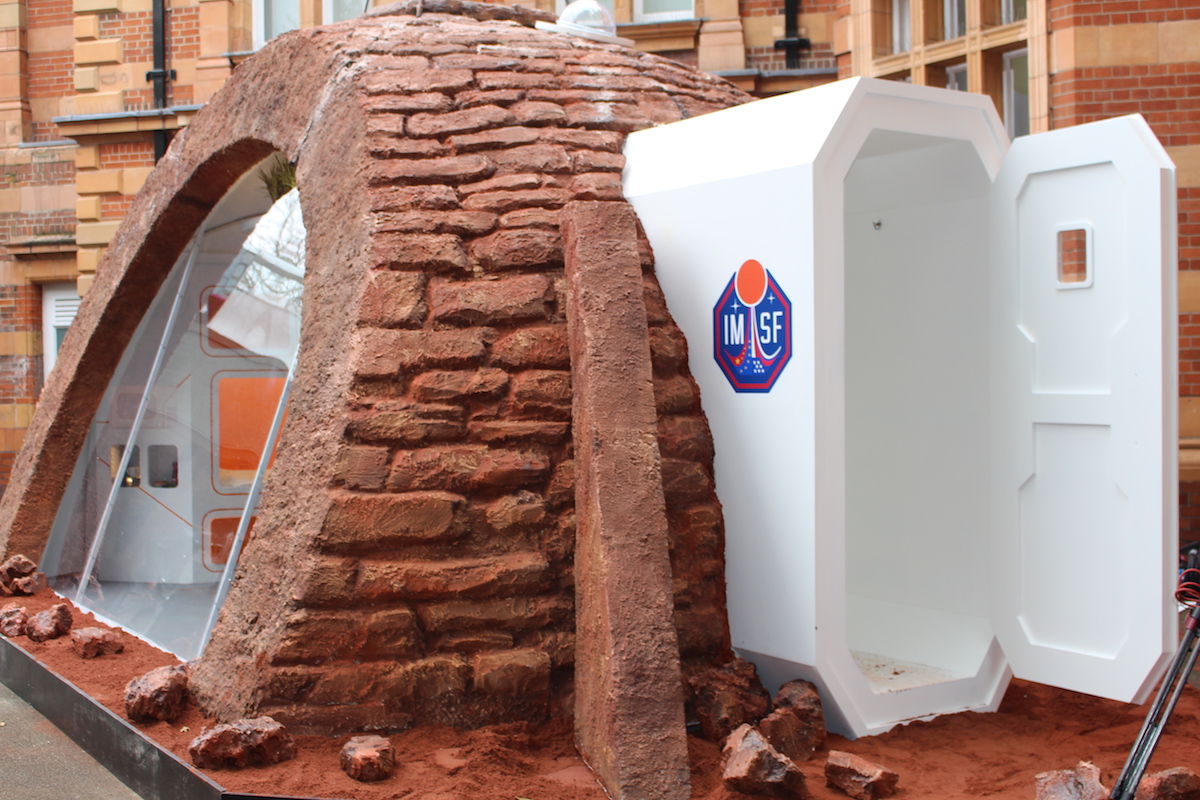Everyone from astronomers to tech companies wants to know what it would be like to live on Mars.
From growing vegetables in Martian soil, to claims that leaving Earth could save the human species, scientists are constantly making advances in this field.
Now, astronomers from the Royal Observatory in London and Stephen Petranek – author of “How We’ll Live on Mars” – have designed a Martian Show Home to demonstrate what life could be like on the Red Planet.
The exhibit, which launched on Thursday 10 November and will run until Wednesday 16 November, marks the launch of “MARS” – a mini-series on National Geographic showing how humans could survive on the planet.
Business Insider went along to take a tour of the Martian home.
This is the Mars Show Home, which is currently on display at the Royal Observatory in Greenwich, London.

The pod-like house was designed by the observatory's astronomers along with "How We'll Live on Mars" author Stephen Petranek. The book is the inspiration for a National Geographic mini-series called "MARS," which looks at how humans could colonise the planet over the next century.

Inside, the pod contains everything a person needs to live on Mars. The Royal Observatory's Public Astronomer Dr Marek Kukula said one of the biggest challenges the planet's first visitors will face is staying happy.

"I think all of the logistical and technical issues have been well thought through," Dr Kukula said. "I suspect the real challenge will be how astronauts will survive and keep their morale going."
According to Dr Kukula, the first astronauts to live on Mars will have to overcome living in "tiny environments, millions of miles away from their families and penned up together for really long periods of time."
More mundade items included a microwave oven and a shelf with personal belongings.
In order to overcome boredom, every house on Mars will come equipped with a work station and TV, a 3D printer, and a virtual reality headset. National Geographic said the 3D printer could have a range of uses, from digitally printing new tools to designing kitchenware and toy.

The home contains all the essential appliances for an extended stay. While Dr Kukula said that they expect astronauts will live on the planet for one or two years at a time while working and conducting experiments, Stephen Petranek said most people who travel to Mars won't come back.

"It's would be an incredibly expensive process just to get a person to Mars in the first place, so to bring them back again is almost a waste of money," Petranek said.
"The people who would be selected to travel to Mars will know it's a one-way ticket, and a chance to create a new civilization."
Living on Mars means being self-sustainable. The astronomers included potted plants in the exhibition, to show how people could grow their own food.

"These could be anything," Dr Kukula said."Fruit, vegetables, tomatoes, potatoes — anything you could grow back on Earth."

While the home contains one single bed at ground level, Dr Kukula said that the pods would sleep up to four people underground. "The ground-level bed is for lounging during the day."

The home also contains the type of space suit anyone who lives on Mars would wear.

"One of the other big problems people will have is adapting to the pressure on the planet," he said.
The atmosphere on Mars is about 100 times thinner than Earth's and would require a lightweight pressure suit. "Otherwise, your eyes would want to burst out of your skull!" Dr Kukula said.
When it comes to building the real thing, homes on Mars won't have windows. This is due to radiation, which is one of the biggest issues astronauts and future Martains will face.

The astronomers included a skylight in their show home. The sunlight bounces through a highly reflective mirror-like tube, brightening up the entire home.
The pod itself is designed to look like it is built out of the earth on Mars. Dr Kukula said this would be the most likely building material, as it means the structure is "strong and used to the planet's environment."


